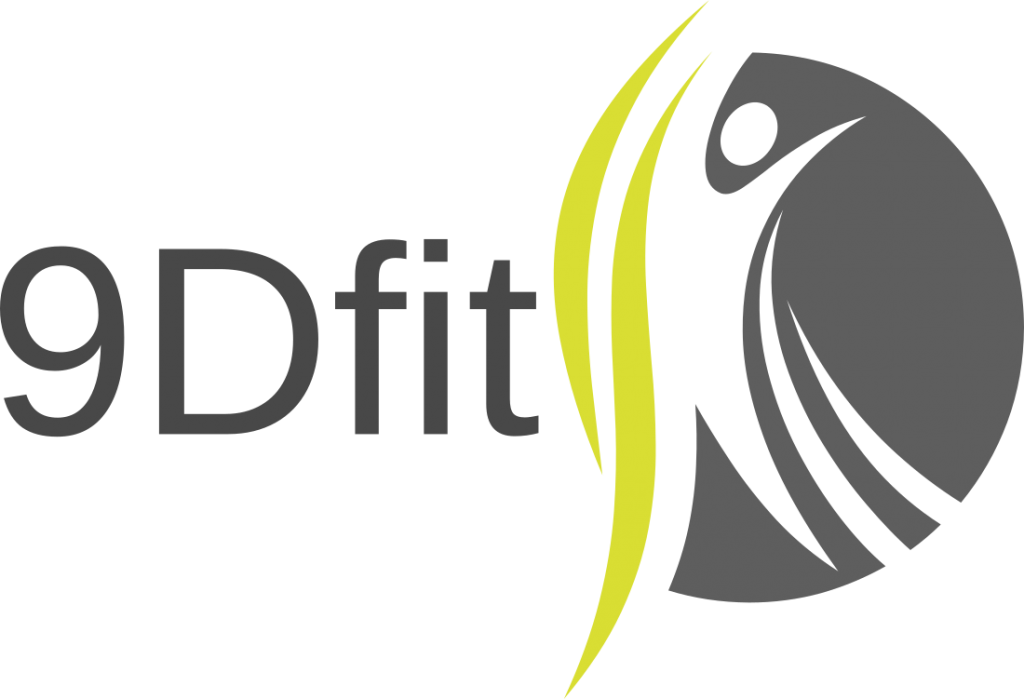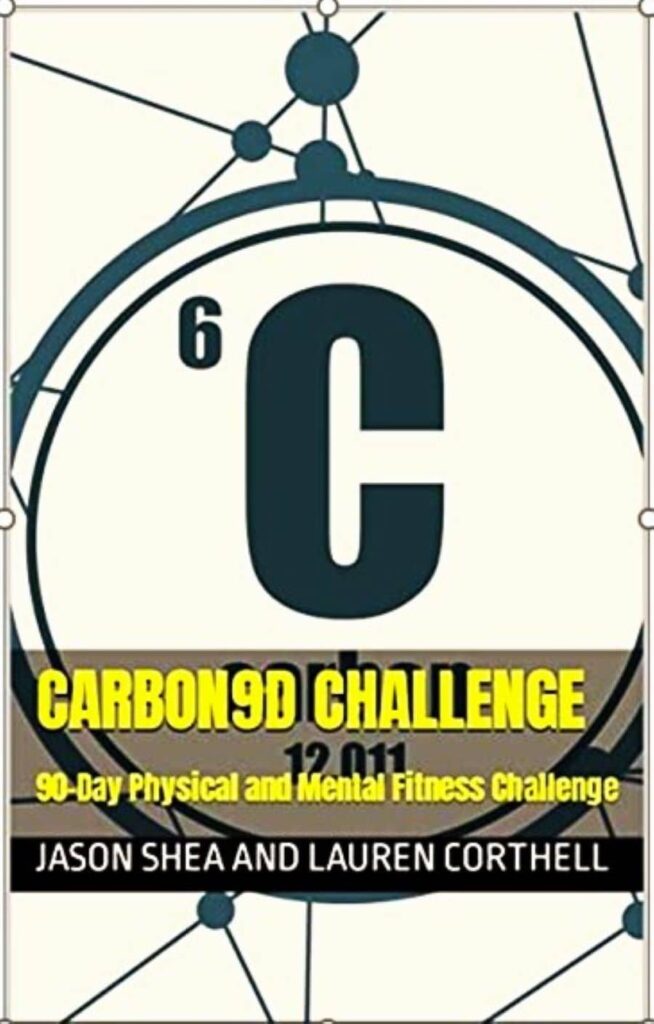By Jason Shea M.S., CSCS, PICP IV
Former international speaker and world-renowned strength coach Charles Poliquin has stated “It is the brain’s intent that determines the training effect, not the actual velocity of the bar.” “In other words, “concentrating on acceleration” while reaching muscle failure will bring about the same adaptations as will lifting at high speed, as long as you concentrate on accelerating the load (7).“
What does training with intent mean? Being completely immersed, engaged, and focused, with high levels of effort and discipline to complete the goal, mission, or task at hand. When looking at it through the lens of the Team Culture Arrow, the Tip of the arrow athletes are often the one’s who train with high levels of intent.
The Story of “Molly Putz”
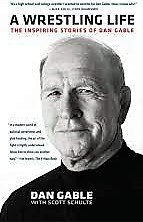
In his excellent book, A Wrestling Life, Legendary U.S. Wrestler and former Iowa Coach Dan Gable tells the story of how in the winter of 1962, he was reversed and pinned in a junior high wrestling match (4). The entire car ride home he was filled with anger. Later that evening that anger turned into pouting, sulking, and feeling sorry for himself.
He tells the story where the only problem with sulking, pouting, and feeling sorry for himself was that he was living in his parent’s house. That behavior was unacceptable. His mom went into his room, and rather than babying him and feeding into the pouting, she told him he was being a “Molly Putz”; a term his mom used when the kids needed a wake-up call because they were feeling sorry for themselves.
She then had him go outside on that cold winter night and shovel the snow on the driveway. He went outside and began shoveling the driveway, albeit, resentfully. According to the book, it was during that shoveling episode that he had awoken a monster of “anger and determination”.
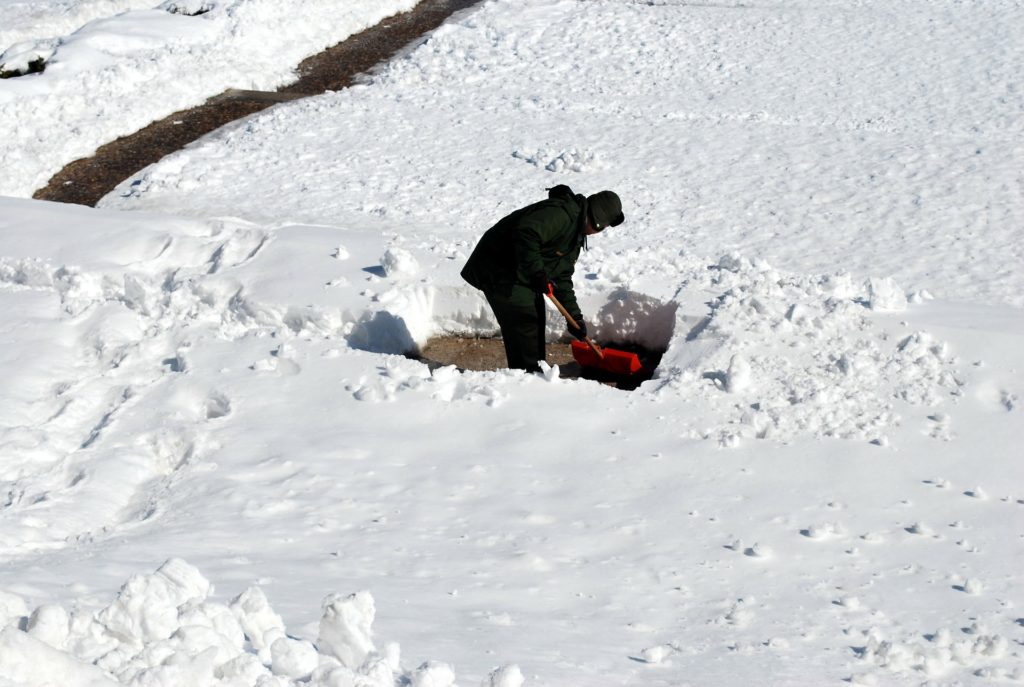
He attacked the shoveling, throwing the snow as fast and far as he could. Once he finished his driveway, determined to never be a “Molly Putz” again, he went and shoveled the neighbor’s driveway. Then once he finished that he went on to the next driveway and so on, until he shoveled all the driveways on his street.
Gable expressed in his book that throughout his childhood and youth, he never wanted to be called a “Molly Putz” again. That was one of the factors that drove him toward success.
In the book, Gable fast forwards to the summer between his freshman and sophomore years of high school. Here he shares the story of when his father set him up with a construction job at Martinson Construction.
Martinson construction was, and still is, a construction company that installs the concrete walls and foundations in new residential homes and commercial buildings. His first day on the job he, along with another new employee, were tasked with shoveling and leveling two large piles of sand in the basement of a new construction project.
Just as he attacked the snow in his driveway, Gable attacked the sand piles in the basement. He worked so hard and fast that he finished the two-hour job in roughly 30 minutes. He then looked at the other pile and saw that the other new employee had walked out.
This left the other pile for Gable to attack. Seeing the value of hard labor and the challenges it provided physically, especially when used as a training tool for the upcoming wrestling season, Gable requested more challenges throughout the summer.

From carrying cement blocks to swinging a sledgehammer and digging ditches, this work was viewed as a means of training for wrestling. He attacked the work. In his book, Gable writes about how his fellow older employees knew he was using the job as a way to train for wrestling. Because of that, they would keep him busy doing random work when there were lulls in the day. He would move cement block piles from one side of a house to another as fast as he could. Then bring them back. The harder the job, the better.
This went on from 7:00am to 5:00pm during the week. Three of those days were followed by grueling wrestling practices.
Then there were Saturdays in which Gable would often run to work, work a 17-hour day, then run home from work. He shares in the book that he gained seven pounds of muscle, became much more physical, and earned people’s respect that summer. He expresses “I have never gotten so strong in a short period of time as I did that summer (4).”
“Bad Intentions”
Side Note: After his 2nd round knockout of Trevor Berbick in their 1986 WBC Heavyweight Championship fight, Mike Tyson summed up his fighting intent when he was quoted saying “every punch I threw with bad intentions to a vital area…I aimed for his ear…I wanted to bust his eardrum…Every punch had bad intentions.”
Quick question: Is the training effect of a 10-rep, all out effort/intensity per-rep set of sledgehammer tire hits the same as a 30-60 second continuous set of tire hits? Or is the training effect of a set of five 5-second eccentric/3-second pause-at-the-bottom explosive pushups the same as a set of 30-50 regular pushups?
When it comes to training intent (and effect) look at the physiques of Olympic sprinters and short distance hurdlers versus the physiques of Olympic triathletes and marathon runners.
Research on Training Intent
A study out of the European Journal of Applied Physiology (2) looked at the effect intent had on maximal power and strength. One group of subjects did sets of 8-10 reps as fast as possible while another group did sets of 8-10 reps at 2-3 seconds per rep. After 10 weeks the group moving the weight as fast as possible saw significantly greater improvements (50% vs 3%) in curl strength, bench press (37% vs 13%), leg press (31% vs 8%), and 30s chair stand (43% vs 6%) (2).
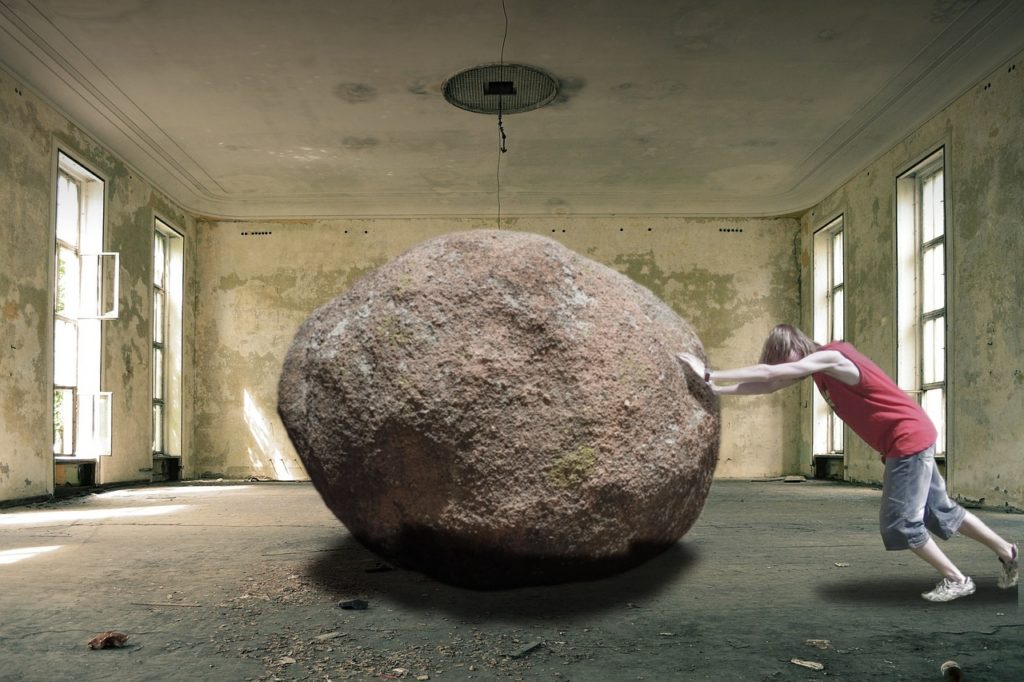
A 2001 study comparing fast vs slow, controlled contraction speeds had similar findings. The group performing the fast contractions saw significantly greater increases in higher threshold muscle fibers and both concentric and eccentric strength (6).
In a 2017 study from Life Sciences, researchers looked at the differences between working out with High Mental Effort (HME) vs Low Mental Effort (LME). After six weeks of training, the high mental effort group had significantly greater increases in strength (20.47%), while the low mental effort group had minimal, if any gains in strength (5).
The researchers stated that “since the only difference in the training programs for the two groups was the level of effort involved during the low-intensity physical exercise, it is reasonably to suggest that human muscle strength gain following a relatively short training program (e.g., 6 weeks in this study) depends primarily on the level of effort involved in the training, not muscle exercise intensity per se. The data suggest that the level of effort involved in generating a relatively low-level motor activity during training plays a critical role in determining strength gains. This explains repeated observations in recent years that human upper and lower limb muscles can be significantly strengthened even without noticeable muscle exercise as long as a strong intent or effort is involved in the envisioned muscle action during training (5).”
The researchers went on to explain that “the HME task involves internal imagery or strong intent to move that activates higher order cortical areas that strengthen or enhance the neural circuitry that controls the descending pathway projecting to and driving the trained muscle (5).
Chopping Wood and Testosterone Levels

A 2013 study on horticultural tribesman in Bolivia measured testosterone levels before and after an hour of intense wood chopping. The researchers found that testosterone levels had increased an average of 48% after one hour of intense wood chopping. They concluded that “when engaged in heavy physical activity, testosterone increases, allowing for the rapid muscular performance enhancement (10).”
Looking at this study, was it the intensity of the wood chopping that spiked testosterone? Or was it the act of hitting something? Did the functional movements associated with intense manual labor play a role?
Full Contact vs No-Contact Martial Arts
A 2018 meta-analysis titled “Hormonal responses to striking combat sports competition” set out to look at the hormonal impacts of multiple different types of martial arts competitions. The researchers looked at no-contact Katas, moderate contact Kumites, and full contact kickboxing among other competitions.
Stress hormone and testosterone levels were tested before and directly after the competitions. The researchers found that the no-contact Kata led to a 3.03% increase in testosterone. The moderate contact Kumite led led to a 12.91% increase in testosterone. Lastly, the full contact kickboxing competition led to a 40% increase in testosterone directly after (8).
Was it the act of striking an opponent with intent that led to the significantly greater increases in testosterone during the kickboxing competitions?
Boston Irish Wolfhounds Rugby Story
Back in 07, 08, and 09, we had the honor of working with the Boston Irish Wolfhounds Rugby team. Those teams were big, strong, fast, tough, and aggressive. Their first side ended up going out to Colorado to compete in the National Championship Final Four one of those years.
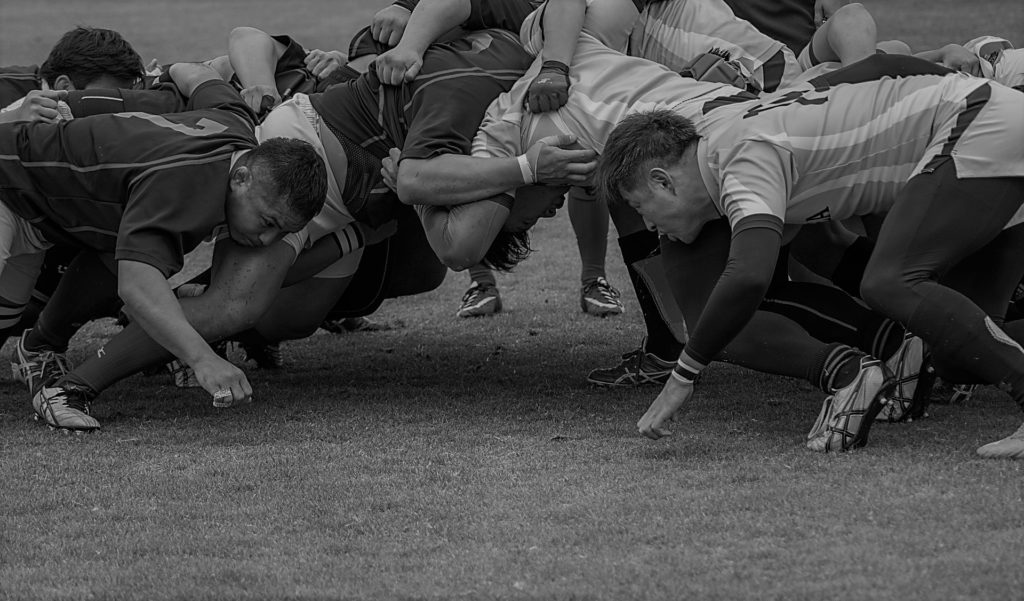
During one of the off-season workouts, the team was doing tire flips. At the time we had several tires, including a 900lb tire, a 700lb tire, and a 500lb tire. On the 500lb tire was the team’s 2nd side flanker, who also happened to be the teams oldest player. At a bodyweight of under 200lbs he was manhandling the tire. To make this story even more impressive, when I asked him how old he was, he told me 58 years old!
“What?” I said. “58 and you are still playing Rugby. Never mind second side for one of the best teams in the country.”
Dumbfounded, I had to ask him why he was still playing Rugby at 59 years old. I will never forget this. He told me that throughout his years, he learned that he needed to hit things in order to maintain his testosterone levels.
That man’s name was Steve Durant. Steve was the head of sports psychology at one of the major hospitals in Boston. Along with that role he also worked as a Sports Psychologist with the Boston Red Sox and currently the Boston Bruins. He intuitively knew about hitting something and the impact it had on his testosterone levels. To read more about “Doc” Durant, check out this excellent Rugby Republic article about him and his approach to mindfulness training for athletes.
Thus far we have talked about chopping wood, Charles Poliquin, Kumite and kickboxing competitions, High vs low mental effort, Irish Wolfhounds, hitting things, and intent. Now, how can you apply it?
Intentional Training
1. Moving at least 80% of your 1RM with the intent to move the bar fast
As Charles Poliquin stated “It is the brain’s intent that determines the training effect, not the actual velocity of the bar.” “In other words, “concentrating on acceleration” while reaching muscle failure will bring about the same adaptations as will lifting at high speed, as long as you concentrate on accelerating the load (7.”
A 2013 study on the brain and progressively higher training intensities found that 80% 1RM or higher led to greater activation of the M1 motor cortex area of the brain (1). The M1 motor band is critical for motor control and learning. Studies have shown that non-invasive brain stimulation oscillations in the “M1 are related to motor learning, imagery, and execution” as well as motor skill acquisition (9).
2. “training intent” nervous system stimulation circuit
A1: Overhead Kettlebell Throws (Viking Toss) x 3-5 (autoregulated by distance/quality – try to maintain within 2-3 feet of best).
Rest 60-90 seconds
A2: 53X1 Explosive Pushups X N: lower for 5 seconds, pause for 3 seconds at the bottom, explode (jump your hands off the ground if you can), then 1 second pause. Autoregulate by concentric speed and technique.
Rest 60-90 seconds
A3: 32X2 Neutral Grip Chin Ups X N: lower for 3 seconds, pause at full extension for 2 seconds, pull-up at fast as you can in a controlled fashion (no-kipping), and pause for 2 seconds at the top. Autoregulate by concentric speed and technique.
Rest 60-90 seconds
A4: Farmer Carry X 40-60 yards
Rest 30-60 seconds
A5: Vertical Jump x N (autoregulate for height). At the bottom of the countermovement swing, try pausing for 2-3 seconds.
Rest 2-4 minutes then start over. Perform 2-5 sets of the circuit depending on your physical readiness, HRV, and sleep quality. For more on this check out this article How Does Food Affect Next Day Physical Readiness?
3. Sledgehammer Hits or Heavy Bag Work
To steal from the Mike Tyson quote above: hitting the tire with “bad intentions” on every repetition. Start with 6-10 total repetitions, alternating sides every rep. For a greater range of motion use a small/low tire or smash the hammer into the sand. To prevent uncontrollable bounce-back when hitting a tire, try using the flat side of the sledge.
To borrow from Mike Tyson again; hitting the bag with “bad intentions”. Short duration sets, longer rest periods, keeping your punches tights, and protecting your wrists and shoulders. Think of “Doc” Durant’s comment and the study on martial artists about hitting things and spiking testosterone.
4. The 36 Minute “Husker Power Metabolic Circuit”
I was introduced to the effectiveness of this workout through my good friend Tom Newman, Yale’s former Director of Performance and Strength and Conditioning. Tom incorporated this and other programs to bring Yale’s athletics to unparalleled successes that included a Lacrosse national championship, Ivy league champs in numerous sports, guys going off to the NFL, Major League Lacrosse, and more.

The history of the Husker goes back nearly 30 years. In his book The Path To Athletic Power, Hall of Fame and former Nebraska Strength Coach and Husker Power Circuit creator Boyd Epley recounts:
“Nationally recognized scientist Dr. Bill Kraemer visited Nebraska many years ago when he was a strength coach at Carroll College in Iowa. I put him through a circuit workout that was so hard it about killed him. We called it the “Death Circuit” then changed the name to the “Survivor Circuit” to give it a more positive spin, but it was still so hard that we quit using it. However, 15 years after first trying the workout, Dr. Kraemer kept tweaking it. When he felt he had something to share, he called and explained how the program built up too much lactic acid in the muscle and was too painful for the athletes to handle. The metabolic circuit corrects that and also sends growth hormone throughout the body to produce strength and size gains.
We needed someone tough to handle the circuit, so we asked our strongest athlete, Kevin Colemen, to give it a try. He had just won the national championship in the shot-put as a junior and was looking for a program to take him to another level. Within a very few weeks, Kevin made gains he hadn’t imagined possible, so we asked hi to address the football team. He told the Nebraska players they weren’t tough enough to handle this program. We challenged 30 players to sign up to do the metabolic circuit, but we warned them it was all or nothing. Once they committed to the six-week program, they could not back out. We also required them to be upper classmen. The program increases strength rapidly, but we’ve learned that over time not to put some athletes on the circuit because it makes them gain weight so quickly. For example, Lawrence Phillips was a powerful 205-pound I-Back who did the program for four weeks before we pulled him off it at 226 pounds (3).”
Here are the program basics:
- 9 exercises total
- Pick a weight you can handle for 10 reps
- 4 minutes to get 3 sets of 10 done per exercise
- Once you complete 3 sets move on to the next exercise as quickly as possible
- 36 minutes to get through all 9 exercises
- Record your weights used per exercise and add up the total poundage moved in 36 minutes
- For example, if you use 200lbs in the squat and perform 10 reps that is 2,000lbs moved per set. 3 sets of that is 6,000 lbs for the squat.
Sample “Husker Power Metabolic Circuit” Stations (with exercises substitutions)
- A: Back Squats: 3 x 10 @ 2010
- B: Hamstring Curls: 3 x 10 @ 1010
- C: Leg Extensions (or walking lunges): 3 x 10 @ 1010 (0r 3 x 10/leg @ 1010)
- D: Barbell Bench Press (or DB): 3 x 10 @ 2010
- E: Lat Pulldowns (or chin-ups): 3x 10 @ 1010
- F: Standing Barbell Overhead Press (or Neutral Grip DB Overhead Press): 3 x 10 @ 1010
- G: Seated Cable Rows (or bent over barbell rows or hammer strength seated rows): 3 x 10 @ 1010
- H: Overhead Cable Triceps Extensions: 3 x 10 @ 2010
- I: Standing Barbell or DB Curls: 3 x 10 @ 2010
Due to its 36 minute time constriction, this is a great workout for improving overall workout/training intent. If you allow distractions such as cell phones, social media, texting, conversations between sets, etc, you risk missing your numbers or time.
For more articles on training, building a winning culture, stress resiliency, and more be sure to check out our blog.
Thanks for reading!
References
- Abeln et al. Brain-imaging during an isometric leg extension task at graded intensities. Frontiers in Physiology. 4; 296. 2013.
- Bottaro et al. Effect of high versus low-velocity resistance training on muscular fitness and functional performance in older men. European Journal of Applied Physiology. 99(3); Pp 257-264. 2007.
- Epley B. The Path To Athletic Power. Human Kinetics. Champaign Il. 2004.
- Gable D, Schulte S. A Wrestling Life: The Inspiring Stories of Dan Gable. University Of Iowa Press. 2015.
- Jiang et al. The Level of Effort, Rather Than Muscle Exercise Intensity, Determines Strength Gain Following A Six-Week Training. Life Sciences. 178: Pp 30–34. 2017.
- Paddon-Jones et al. Adaptation to chronic eccentric exercise in humans: the influence of contraction velocity. European Journal of Applied Physiology. 85(5); Pp 466-471. 2001.
- Poliquin C. The Poliquin International Certification Program – Theory 1 Manual. 2007.
- Slimani et al. Hormonal responses to striking combat sports competition: a systematic review and meta-analysis. Biology of Sport. 35(2); Pp 121-136. 2018.
- Tekeuchi N, Izumi S. Motor Learning Based on Oscillatory Brain Activity Using Transcranial Alternating Current Stimulation: A Review. Brain Sciences. 11(8); 1095. 2021.
- Trumble et al. Age-dependent increases in male salivary testosterone during horticultural activity among Tsimane forager-farmers. Evolution and Human Behavior. 34(5); Pp 350-357. 2013.
